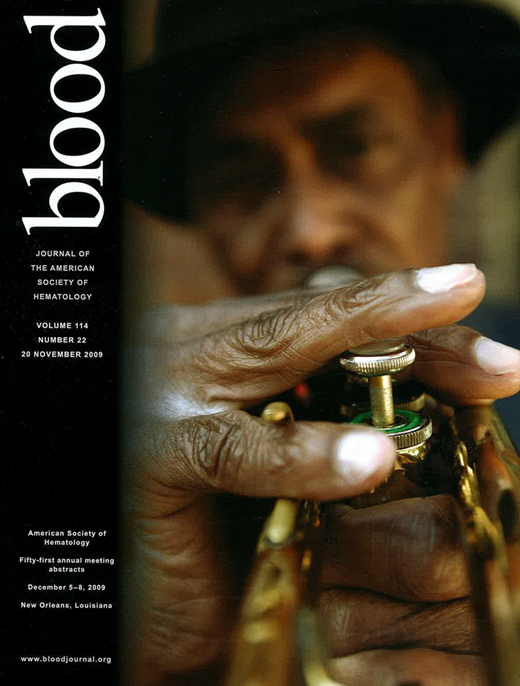Abstract
Abstract 2657
Poster Board II-633
For most patients with relapsed and refractory acute myeloid leukemia, therapeutic success is unpredictable with current cytotoxic chemotherapeutic regimens. Moreover, multiple courses of therapy have been shown to result in co-morbid conditions, which can often preclude the patient from being able to receive the potentially curative therapy of allogeneic bone marrow transplantation. With the aim of identifying a successful chemotherapy regimen for these patients, based on patient-specific myeloid blast cell chemo-sensitivities, we have developed a high-throughput screening assay that utilizes primary (patient-derived) leukemia cells and tested for chemo-sensitivity against a panel of established chemotherapeutic agents as well as novel agents. In our laboratory, we were able to identify in vitro resistance against the various drugs already clinically administered, including cytarabine, etoposide, and anthracyclines. Importantly, we were able to show in vitro sensitivity to chemotherapy agents that had not been previously administered. The index patient was a 32-year-old woman with primary refractory acute myeloid leukemia who had received six different therapeutic regimens prior to our testing, all of which demonstrated in vitro resistance using our assay. The blasts were sensitive, however, to 6-thioguanine with an inhibitory concentration (IC50) of 70 nM. Based on the in vitro data, the patient began a combination treatment regimen containing oral 6-thioguanine as her white blood cell (WBC) count had increased to greater then 50,000 cells/ml on her previous therapy. Following a maintenance regimen with these agents, her circulating blast count decreased to less then 10,000 cells/ml, and she had partial recovery of the neutrophil count, resulting in a decrease in the overall leukemia burden. This result was not seen with her previous treatment regimens. Importantly, the majority of this therapy was administered in the outpatient setting. Subsequently, we have collected specimens from more than ten patients with AML and used this screening assay to predict their response to various chemotherapeutics. In each case, we have accurately predicted the in vivo clinical response (both sensitivity and resistance) to different chemotherapeutic agents. This demonstrates that the technology currently being used to screen drug therapy for patients with relapsed and refractory AML is clinically useful and has a potential role in designing individualized drug treatment regimens.
No relevant conflicts of interest to declare.
Author notes
Asterisk with author names denotes non-ASH members.

